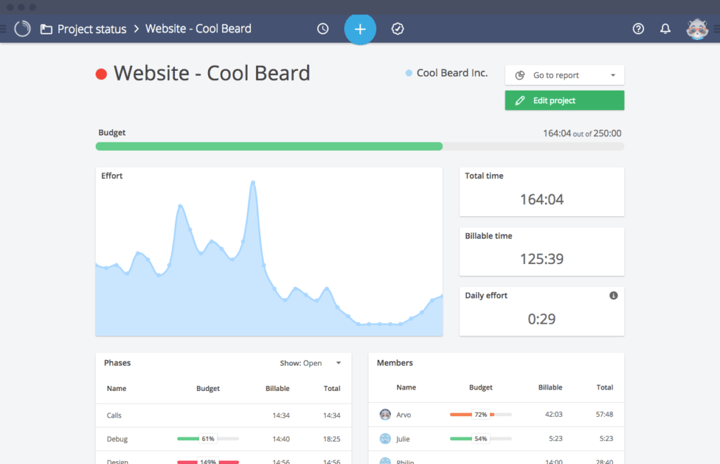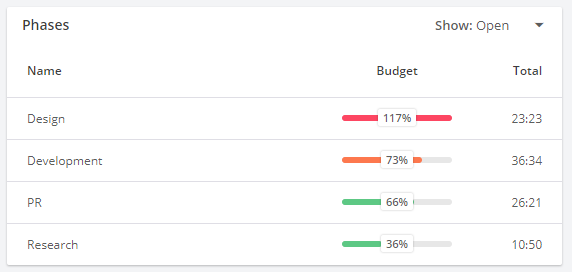When starting on a new project one would hope that it’ll be a piece of cake. Unfortunately, that almost never happens.
There are factors that can make a project go out of control. The important thing is to know how to get the project back on track.
The dangers of scope creep
A project that runs smoothly from start to finish is not a utopia, of course. Any project manager should expect some bumps along the road, but quickly to adjusting and keeping clear communication with the client is usually enough to avoid disaster.
A sidetracked project is another story. Scope creep in project management is usually responsible for missed deadlines, inflated costs, and tensions among all the people involved in the project.
One can argue that scope creep isn’t inherently bad: sometimes change is inevitable to meet the client’s needs. This doesn’t mean project managers shouldn’t keep a close eye and be ready to raise a red flag.
When deviations from the project’s original goals pile up, the execution becomes more complex and the result doesn’t fit the original vision anymore.
By taking a step back and resetting goals and requirements, project managers can easily bring the project back on track.
How to bring a project back on track
Check the current status
The first thing a project manager should do is to analyze and determine the project status. Stop and take a look at what’s been done so far. How many tasks have been completed? How many are (theoretically) left to do?
Taking a look at how much effort has been poured into the project is crucial to have a clear picture of the total cost of the project. Start by knowing how many hours have been spent, and how many people of your team worked on it. You should know exactly the time and resources that went into the project.
This is easier if you track the time spent on projects by using a time tracking tool. Spreadsheets can only help you so much, as they’re difficult to fill, and they certainly don’t make it easy to see clearly where the hours go.
Checking the project effort in a time tracking tool like Timeneye is easier thanks to the dedicated project status page with the effort graph and the budget progression bar.

Dividing your project into phases, and assigning a time budget to them, is also important to identify what tipped the original plan off. In the example of the phases budget below, it seems that the design phase went badly off:

Help clients understand what they really need
Receiving contradicting requests from a client should raise a red flag. But don’t be too quick to label the client as “bad”.
Client indecisiveness has many causes: maybe the client didn’t consider certain factors while conceiving the project, or the outlook for the market changed. Or, there’s been a variation to the budget, or an internal disagreement in their management.
To help them understand what they really want, sit with the client and reaffirm the scope and requirements of the project. Try to involve the minimum amount of stakeholders, as too many heads do not necessarily lead to the best results. When you have defined the new direction, make sure to write everything down and share the document with the stakeholders. Gently remind everyone involved that the document will be the point of reference from now on.
Determine what you need to achieve the new scope
After working with your clients, you should talk to your internal resources. Share the new direction with them, and with their help try to understand precisely what tasks need to be done to finish the project. Communicating clearly with your team and asking for their advice will avoid unnecessary or misplaced tasks, saving you from further delays.
Once all the tasks are clear, assign them to your team members and agree to a timeline, that you will then share with the clients. At this point, you should aim for effective delivery, so if your team feels overwhelmed consider outsourcing some tasks.
Recalculate budgets and costs
This is especially delicate as you don’t want to brandish the contract as a weapon against the client. Obviously, it’s your right to be paid for the extra work. But if the project has already created tensions among the stakeholders, avoid adding fuel to the fire. Instead, explain clearly what caused cost variations and why.
Try to reach a middle ground where the clients don’t get scared by the rising costs, and your business doesn’t lose money. Clarity is essential when you explain what additional tasks need to be done to close the project, how many resources will work, and for how much time.
Learn from there
When you’ve finally archived the project as “Finished”, try to understand what happened and what you can learn from there. It’ll serve as a valuable lesson for your future work!
How do you fight scope creep? Let us know your advice to get projects back on track. To avoid getting your project sidetracked in the first place, learn how you can keep a project under control with a time tracking tool.
Give it a try and sign up for a free 30-day Timeneye trial!